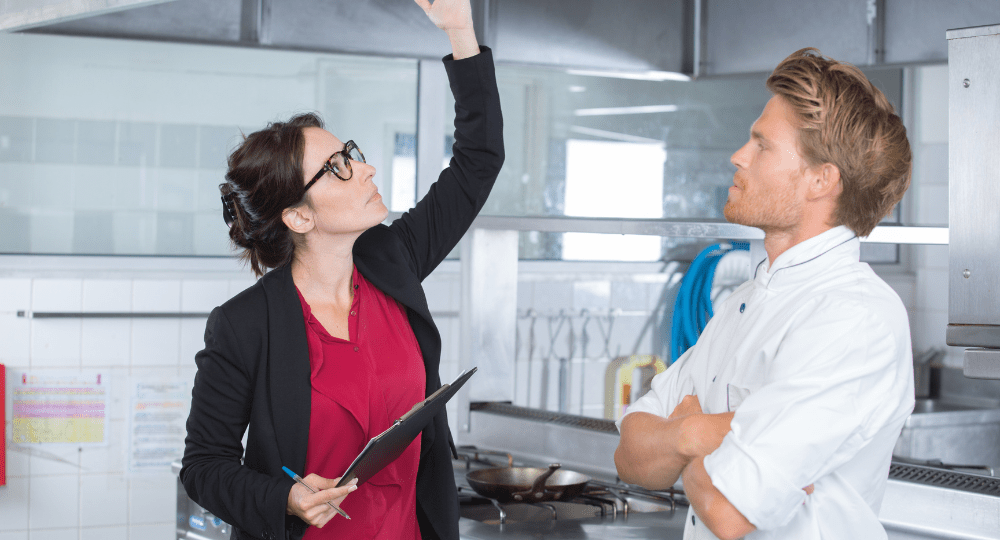
Food service is a complex industry in which every staff member plays a vital role in ensuring the health and safety of guests. Health inspections can be nerve-wracking but are essential in ensuring a safe environment. Violations can lead to significant fines or force restaurants to shut down until conditions improve.
Best practices for safe food handling and storage and restaurant deep cleaning are critical as deterrents against hazards that can cause serious harm to restaurant guests and employees. When left ignored, safety hazards can result in serious harm or loss of life for staff or guests and should always be taken seriously.
The best way to ensure a restaurant health inspection goes well is to be prepared. Read on to learn what health inspectors look for during inspections and how to proactively keep your restaurant clean and pass inspections with flying colors.
Understanding Southern California’s Health Inspection Guidelines
A restaurant health inspection is a thorough examination of your staff and food-related processes to verify that the restaurant follows all current rules and regulations for storing, producing, processing, and packaging food. Each state has its own health and safety codes that restaurants must adhere to. Visit the California Department of Public Health website for a list of current restaurant codes. Health inspections typically happen once every six months.
Health inspection guidelines may vary over time, but common points of focus during health inspections include:
- Use-by-date labels on food and ingredients
- The storage status of food and cleaning products
- Signs of cross-contamination between raw, cooked, and ready-to-serve food
- Temperature regulation of coolers and freezers
- Temperature logs for cooked food
- Proper cleanliness of employees
- Cleanliness of floors, walls, and ceilings
- Handwashing
- Signs of pests
Inspectors may also observe your employees during work hours to evaluate their knowledge and performance of food safety procedures.
Prepare a Comprehensive Cleaning & Maintenance Schedule
Inspections can happen at any time, so the best way to prepare is to perform regular kitchen hood maintenance to deal with any problems as they occur and put yourself in the best position to pass any restaurant health inspection whenever they occur. Maintenance can take many forms, but here are some activities you can engage in to keep your restaurant safe for everyone who walks through the door:
- Create a self-inspection checklist
- Establish regular training
- Make sure that each employee has a food handler’s card
- Stay up to date on local food and health codes
- Place food safety posters in visible areas
- Keep accurate records to prove compliance
- Review previous inspections to see where your restaurant can improve
Most upkeep can be done with your own staff, but hiring a professional cleaning team provides greater quality control and goes a long way to sustaining the best form of your restaurant. SoCal Hoods delivers professional services such as kitchen exhaust cleaning, hood repair and preventative care, and equipment cleaning.
Importance of Hood Cleaning for Fire Safety
Kitchen hoods are a vital part of a restaurant’s ventilation system. Here’s why hood cleaning is a fundamental element of fire safety:
- Reduce the chance of kitchen fires – Kitchen hoods draw smoke, grease, and other flammable substances away from the cooking area. Cleaning the hoods eliminates a fire hazard and minimizes the risk of an accident.
- Ensures compliance with regulations and standards – The National Fire Protection Association (NFPA) and other rule-makers make regular kitchen cleaning a regulatory standard. Businesses must do so to comply with the law.
- Improve ventilation and air quality – Clean kitchen hoods raise the efficiency of your ventilation system, making your kitchen a more comfortable place for staff to work.
- Increase equipment lifespan – Regular cleaning also leads to longer-lasting systems, saving you money on repairs or replacement parts.
The cleaning schedule for kitchen equipment differs depending on its scale. Here’s a rundown of when things should be cleaned:
- Low-volume systems (Pizza ovens, pasta cookers, etc) should be cleaned annually
- Mid-high volume systems (fryers, woks, grills) should be cleaned semi-annually
- Systems that use solid fuel (wood or charcoal) should be cleaned quarterly
- Non-regular use systems can be cleaned on a less consistent basis
Don’t wait until your next inspection—schedule your hood cleaning service with SoCal Hoods today and keep your kitchen safe, compliant, and running smoothly!
Contact SoCal Hoods Today
SoCal Hoods has been providing top-class service to restaurants throughout Southern California since 2010. Our attention to detail, customer service, and competitive pricing have made us a favored option over many competitors.
We are certified through Phil Ackland and CHDCA and will serve any establishment in Los Angeles, Orange County, San Diego, Riverside County West of Palm Desert, and parts of San Bernadino. If you are interested in our work or would like to schedule a free estimate, please contact us today.
Image Credit: ALPA PROD // Shutterstock

